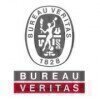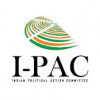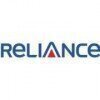Filter interviews by
Luxor Writing Instruments Interview Questions and Answers
17 Interview questions
Ensuring consistent color reproduction globally involves standardization, calibration, and using reliable color profiles.
Use standardized color spaces like sRGB or Adobe RGB to maintain consistency across devices.
Calibrate monitors and printers regularly to ensure accurate color representation.
Employ color management systems (CMS) to maintain color fidelity from design to print.
Utilize Pantone color matching for p...
RGB is for digital screens, while CMYK is for print. Each uses different color mixing methods suited to their mediums.
RGB stands for Red, Green, Blue; used for digital displays like monitors and TVs.
CMYK stands for Cyan, Magenta, Yellow, Key (Black); used for color printing.
RGB colors are created by combining light, while CMYK colors are created by mixing inks.
An example of RGB usage is designing a website, while ...
Accounts payable affects cash flow, liabilities, and overall financial health, impacting balance sheets and income statements.
Accounts payable is recorded as a liability on the balance sheet, reflecting amounts owed to suppliers.
An increase in accounts payable can improve cash flow in the short term, allowing for more liquidity.
Accounts payable impacts the income statement indirectly; timely payments can lead to d...
Capital expenditure is for long-term assets, while revenue expenditure is for day-to-day operational costs.
Capital Expenditure (CapEx) involves purchasing or upgrading physical assets like buildings or machinery.
Revenue Expenditure (RevEx) covers operational costs such as rent, utilities, and salaries.
Example of CapEx: Buying a new delivery truck for the business.
Example of RevEx: Paying monthly electricity bills ...
Fixed assets are long-term tangible assets used in business operations, essential for generating revenue.
Property, Plant, and Equipment (PP&E) - e.g., buildings, machinery, vehicles.
Land - e.g., plots owned for business operations.
Furniture and Fixtures - e.g., office desks, chairs.
Leasehold Improvements - e.g., renovations made to rented spaces.
Intangible Assets - e.g., patents, trademarks (though not tangibl...
I manage asset disposal by ensuring compliance, maximizing value, and maintaining accurate records throughout the process.
Conduct a thorough assessment of the asset's condition and value before disposal.
Ensure compliance with legal and environmental regulations, such as hazardous waste disposal.
Develop a disposal strategy that may include resale, recycling, or donation, depending on the asset's condition.
Example: ...
Reconciling the asset register with the general ledger ensures accurate financial reporting and asset management.
1. Review the asset register for all recorded assets and their values.
2. Compare the total asset values in the asset register with the general ledger.
3. Identify discrepancies, such as missing assets or incorrect valuations.
4. Investigate discrepancies by checking supporting documents like invoices and ...
The accounts payable process involves managing and processing invoices from suppliers to ensure timely payments.
Invoice Receipt: Collect invoices from suppliers, either electronically or via mail.
Invoice Verification: Check the invoice details against purchase orders and delivery receipts for accuracy.
Approval Process: Route the invoice for approval from relevant departments or managers before payment.
Payment Proc...
Effective controls in the AP process ensure accuracy, prevent fraud, and maintain compliance with financial regulations.
Segregation of Duties: Ensure different individuals handle invoice approval and payment processing to reduce fraud risk.
Invoice Verification: Implement a three-way match process (invoice, purchase order, and receiving report) to confirm accuracy before payment.
Approval Hierarchy: Establish a clea...
A bad debt write-off journal entry removes uncollectible accounts from financial records.
Debit Bad Debt Expense to recognize the loss.
Credit Accounts Receivable to reduce the asset.
Example: If $1,000 is deemed uncollectible, the entry is: Debit Bad Debt Expense $1,000, Credit Accounts Receivable $1,000.
Luxor Writing Instruments Interview Experiences
12 interviews found
I appeared for an interview in Jun 2025, where I was asked the following questions.
- Q1. Depends on your experience and your working.
- Q2. Depends on your skills.
- Q3. Company need a experience employee.
Interview Preparation Tips
(2 Questions)
- Q1. About your self
- Q2. Salary accepted
(2 Questions)
- Q1. What productivity?
- Ans.
Productivity refers to the efficiency of production processes and the output generated relative to the input.
Productivity is a measure of how efficiently resources are used to produce goods or services.
It can be calculated by dividing output by input, such as units produced per hour of labor.
Improving productivity often involves optimizing processes, reducing waste, and increasing efficiency.
Examples include implementi...
- Q2. What percentage of rejection acceptable in production?
- Ans.
The acceptable percentage of rejection in production varies depending on industry standards and company goals.
Acceptable rejection rates typically range from 1-5% in most industries.
Some industries, such as automotive or aerospace, may have stricter standards with rejection rates below 1%.
Continuous improvement efforts aim to reduce rejection rates over time.
Factors like product complexity, production process, and qual...

Mr. B. S. Bhatia sir
(5 Questions)
- Q1. Personal and tecnical
- Q2. Personal family bac
- Q3. Tecnical and work process
- Q4. Store managment
- Q5. Final hr and documentation
Interview Preparation Tips
I appeared for an interview before Jun 2024, where I was asked the following questions.
- Q1. What is the difference between the RGB and CMYK color modes?
- Ans.
RGB is for digital screens, while CMYK is for print. Each uses different color mixing methods suited to their mediums.
RGB stands for Red, Green, Blue; used for digital displays like monitors and TVs.
CMYK stands for Cyan, Magenta, Yellow, Key (Black); used for color printing.
RGB colors are created by combining light, while CMYK colors are created by mixing inks.
An example of RGB usage is designing a website, while CMYK ...
- Q2. What methods can be employed to ensure consistent color reproduction in different parts of the world?
- Ans.
Ensuring consistent color reproduction globally involves standardization, calibration, and using reliable color profiles.
Use standardized color spaces like sRGB or Adobe RGB to maintain consistency across devices.
Calibrate monitors and printers regularly to ensure accurate color representation.
Employ color management systems (CMS) to maintain color fidelity from design to print.
Utilize Pantone color matching for print ...
(1 Question)
- Q1. How r u feeling today and how confident you are about interview
Interview Preparation Tips
I appeared for an interview before Jun 2023, where I was asked the following questions.
- Q1. Go through Account payable process?
- Q2. What is the impact of accounts payable (AP) on financial statements?
- Ans.
Accounts payable affects cash flow, liabilities, and overall financial health, impacting balance sheets and income statements.
Accounts payable is recorded as a liability on the balance sheet, reflecting amounts owed to suppliers.
An increase in accounts payable can improve cash flow in the short term, allowing for more liquidity.
Accounts payable impacts the income statement indirectly; timely payments can lead to discou...
- Q3. What controls are needed in the AP process?
- Ans.
Effective controls in the AP process ensure accuracy, prevent fraud, and maintain compliance with financial regulations.
Segregation of Duties: Ensure different individuals handle invoice approval and payment processing to reduce fraud risk.
Invoice Verification: Implement a three-way match process (invoice, purchase order, and receiving report) to confirm accuracy before payment.
Approval Hierarchy: Establish a clear app...
- Q4. What is the difference between capital expenditure and revenue expenditure?
- Q5. What are the types of fixed assets?
- Q6. How do you reconcile the asset register with the general ledger?
- Ans.
Reconciling the asset register with the general ledger ensures accurate financial reporting and asset management.
1. Review the asset register for all recorded assets and their values.
2. Compare the total asset values in the asset register with the general ledger.
3. Identify discrepancies, such as missing assets or incorrect valuations.
4. Investigate discrepancies by checking supporting documents like invoices and purch...
- Q7. How do you handle asset disposal or retirement?
- Ans.
I manage asset disposal by ensuring compliance, maximizing value, and maintaining accurate records throughout the process.
Conduct a thorough assessment of the asset's condition and value before disposal.
Ensure compliance with legal and environmental regulations, such as hazardous waste disposal.
Develop a disposal strategy that may include resale, recycling, or donation, depending on the asset's condition.
Example: For o...
- Q8. What’s the difference between revenue and receivable?
- Ans.
Revenue is the total income generated, while receivables are amounts owed by customers for goods/services delivered.
Revenue represents the total sales made by a company during a specific period.
Receivables are amounts that customers owe to the company for credit sales.
Example of revenue: A company sells $100,000 worth of products in a year.
Example of receivables: If $20,000 of that sales is on credit, it becomes accoun...
- Q9. What’s the journal entry for a bad debt write-off?
Interview Preparation Tips

(1 Question)
- Q1. Why do want to leave your existing organisation
(1 Question)
- Q1. Iso related questions Quality related questions
Interview Preparation Tips

(1 Question)
- Q1. What's inventory, rejection control, material management
- Ans.
Inventory, rejection control, and material management are essential aspects of production engineering.
Inventory refers to the stock of raw materials, work-in-progress, and finished goods that a company holds for production and sales.
Rejection control involves implementing measures to minimize the rejection of defective products during the manufacturing process.
Material management includes planning, sourcing, purchasing...

(1 Question)
- Q1. About part load consignment.
(1 Question)
- Q1. About part load logistics.
(1 Question)
- Q1. Self introduction with salary negotiation
Interview Preparation Tips
I applied via Recruitment Consultant and was interviewed in Jun 2021. There were 4 interview rounds.
Interview Questionnaire
6 Questions
- Q1. What is your kpi ?
- Ans. 1. General (Routine), preventive and break down maintenance of moulds. Spare management
- Q2. 1. Previous works experience.
- Ans. As per deferent roll in deferent company.
- Q3. If any challenging job any done ?
- Ans.
Yes, I faced a challenging job when I had to streamline production processes under tight deadlines and limited resources.
Implemented a new scheduling system that reduced downtime by 20%.
Led a team to troubleshoot a major equipment failure, restoring operations within 48 hours.
Faced a sudden increase in demand; coordinated with suppliers to ensure timely delivery of materials.
- Q4. Spare parts manufacturing knowledge.
- Q5. Reason to change current company.
- Q6. Personal growth.
Interview Preparation Tips
Top trending discussions




Luxor Writing Instruments Interview FAQs
Some of the top questions asked at the Luxor Writing Instruments interview -
Tell us how to improve this page.
Luxor Writing Instruments Interviews By Designations
- Luxor Writing Instruments Production Engineer Interview Questions
- Luxor Writing Instruments Senior Engineer Interview Questions
- Luxor Writing Instruments Production Manager Interview Questions
- Luxor Writing Instruments Welfare Officer Interview Questions
- Luxor Writing Instruments Product Manager Interview Questions
- Luxor Writing Instruments Assistant Manager Interview Questions
- Luxor Writing Instruments HR Manager Interview Questions
- Luxor Writing Instruments Design Engineer Interview Questions
- Show more
Interview Questions for Popular Designations
- Senior Executive Interview Questions
- Analyst Interview Questions
- Design Engineer Interview Questions
- Software Developer Interview Questions
- Sales Executive Interview Questions
- Senior Engineer Interview Questions
- Associate Software Engineer Interview Questions
- Data Analyst Interview Questions
- Show more
Overall Interview Experience Rating
based on 20 interview experiences
Difficulty level
Duration
Interview Questions from Similar Companies
Luxor Writing Instruments Reviews and Ratings
based on 287 reviews
Rating in categories
|
Assistant Manager
30
salaries
| ₹4.8 L/yr - ₹8.7 L/yr |
|
Production Engineer
28
salaries
| ₹2.1 L/yr - ₹5 L/yr |
|
Area Sales Manager
23
salaries
| ₹6 L/yr - ₹9.4 L/yr |
|
Regional Business Manager
21
salaries
| ₹16.6 L/yr - ₹30 L/yr |
|
Senior Engineer
20
salaries
| ₹3.2 L/yr - ₹5.2 L/yr |

Bureau Veritas

CMS Infosystems

Intertek

TÜV NORD
- Home >
- Interviews >
- Luxor Writing Instruments Interview Questions
















